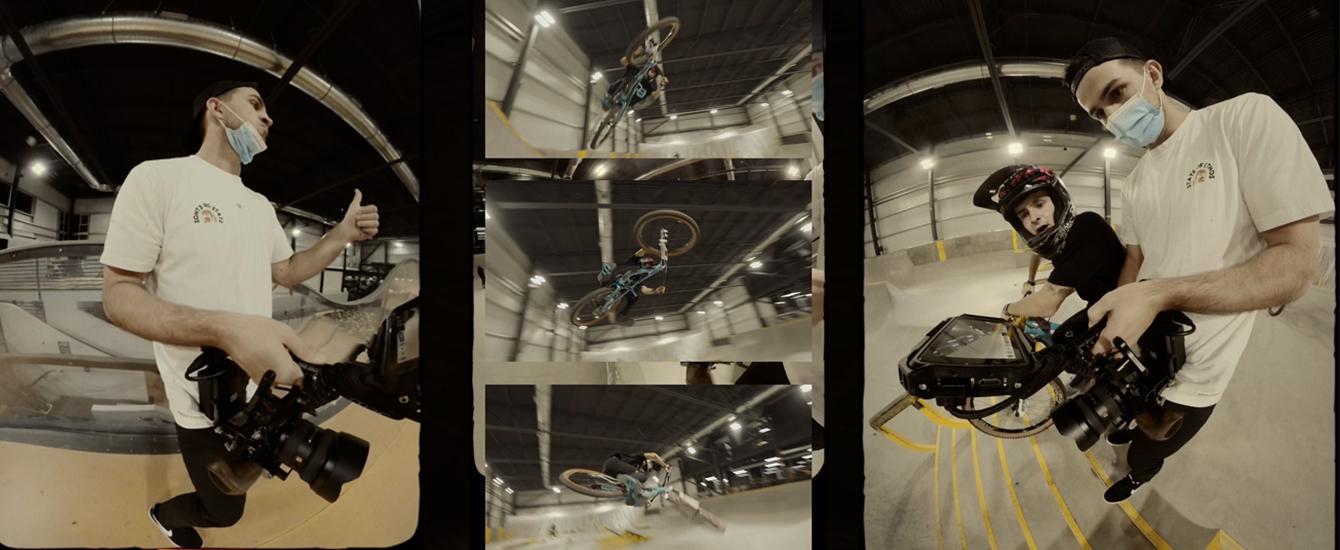Reed Boggs X Ryan Robbins | A Deeper Dive into the Content Creation Process
The mountain bike community is lucky to have a large pool of high quality content to consume. What does the creative process look like for the videographers who make these projects possible? We caught up with Ryan Robbins, who we've been lucky to have worked with before, to take a deeper dive into his content creation process. Ryan sheds some light on the idea generation, storyboarding, and risk management side of filming that could easily be overlooked.
Video by Ryan Robbins
Stan's NoTubes: In your experience, do riders come to you with video ideas or do you find yourself pitching projects to athletes that you want to work with?
Ryan Robbins: I'd say it's a good mix between the two. In my experience, the end product is always better when both the rider and the creative are working closely together brainstorming shots and unique approaches to documenting the experience as opposed to all the direction coming from one perspective.
SNT: Audience retention is a buzzword that's often included in discussions surrounding the analytics of video projects. How big a role do individual clips that will be used for promotional purposes on social media play into your storyboarding process?
RR: It definitely plays a role but personally I try to keep its influence in check. I feel that story should always come first when setting out to produce any type of material and that shouldn't be sacrificed in order to maintain people's interest in the piece.
SNT: How do you balance hooking a viewer in the first few seconds without showing the most impressive sequence right off the bat?
RR: I think there are a couple ways to do this. One way I've found success in is to start the edit with something that can still peak people's interest, whether that be a unique perspective/angle or to have dramatic changes in pace, with fast cuts and lots of information without giving away the whole story. Those tend to cause the viewer to pause for at least a couple seconds and wait for more. Pairing that approach with shooting enough material to keep a good balance throughout the edit showing impressive segments along the way.
SNT: While on site, what sort of conversations are happening around the risk versus reward decisions that are taking place before shooting some of the cornerstone shots of a project?
RR: These are always very important conversations to have. We've all had an experience where we film a segment or feature of trail that feels way gnarlier then the GoPro or iPhone show and it's a pretty defeating feeling. That's why I've found it's so important to be on the same page with the athlete in deciding which large features are going to produce the best result. The confidence of the rider in hitting the feature, the confidence in the videographer/photographer in capturing a good angle to really show the magnitude of what's happening are two vital elements to making it worth everyone's effort. Often if you take your time you can usually find a good compromise of risk and reward.
SNT: A ton of great video content is hitting media outlets. How much time do you spend checking out the video projects from other artists?
RR: I love combing through the media checking out other creatives' work, I find a ton of inspiration and motivation from others in the industry especially in the action sports industry, as I've found that a lot of creatives in this space are forced to get creative with how they approach their projects due to the difficulty often times surrounding the logistics of producing high quality content in harsh environments. I tend to spend more time consuming this type of material when I'm in the pre production stages of projects looking for specific shots or elements of inspiration that will help elevate my project.
SNT: Can inspiration be pulled from other projects without feeling like you're ripping off someone else's idea?
RR: There is definitely a fine line to walk in this regard. In a world focused on creativity, one of the worst pieces of feedback you can hear is that someone feels like you blatantly copied another's work. One aspect I've found really helpful in this regard is the importance of developing your own style. If you have worked hard to clearly define what your style is then you can take inspiration from others and put your own unique spin or twist on it to make it more of your own.

